
We kindly inform you that, as long as the subject affiliation of our 300.000+ articles is in progress, you might get unsufficient or no results on your third level or second level search. In this case, please broaden your search criteria.

The research reported here is based on dialectological fieldwork among Lebanese Jews from 2006 to 2015. In the 20th century most Jews of Beirut lived in the Jewish Wādi ˀAbu Žmīl quarter, an area measuring 300 metres by one kilometre. Very few families lived in other parts of the city. The Beirut community consisted of Jews originally Lebanese, Syrian Jews from Aleppo and Damascus, numerous Ashkenazi Jews, Jews originally Maghrebi, some Kurdish Jews, Jews from Turkey and Greece, especially Salonika, and Sephardi Jews originally from Andalusia who reached Beirut after their expulsion from Spain in 1492. The Beirut Jews’ dialect differed from that of the Sidon Jews, but in many respects also from the dialects of the Beirut Arabs, lacking highly typical phenomena such as the Imāla. Like diverse other Modern Judeo-Arabic dialects, this one embraces the vast array of vocabulary used in Jewish life. At its height Beirut’s Jewish community numbered several thousands, but over time it dwindled and disappeared – together with its dialect. Most of its speakers left, many of them for Israel, where the fieldwork was undertaken.
More...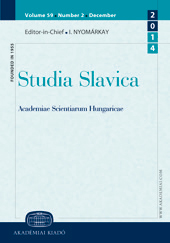
The paper presents the results of a study of metaphorical vocabulary with the meaning of assessment of social change. The analysis involves common Russian vocabulary as well as the material of Russian dialects. Previously unpublished expeditionary records of dialect speech are introduced into academic discussion. Special attention is paid to the onomasiological analysis of linguistic facts. Four groups of motives are revealed: the motives of destruction (loosening, turning inside out, and death); spatially dynamic motives (moving away and disappearance); the motives of qualitative changes (the loss of one’s own properties and status, the acquisition of similarity with representatives of a foreign nation, the acquisition of worse properties, cooling down); and the motives of confusion (mixing of different cultures and disorientation). It is shown that the bearers of traditional folk culture tend to evaluate the changes of any kind as undesirable. A disapproving assessment of social change is due to the orientation of traditional culture toward strict adherence to customs.
More...
This paper examines the term ā-rè recorded in mediaeval Chinese historical sources as the title of the ruler of the Yenisei Kirghiz state. The author aims to discover which Old Turkic title this Chinese phonetic transcription corresponds to. By reconstructing the sounds in ā-rè according to Middle Chinese the author argues that the most likely pronunciation of the term was änäl, which he suggests is a phonetic variant of the Old Turkic title inäl. The author also argues that this was a temporary title of the ruler of the Yenisei Kirghiz during their vassalage under the Uyghurs.
More...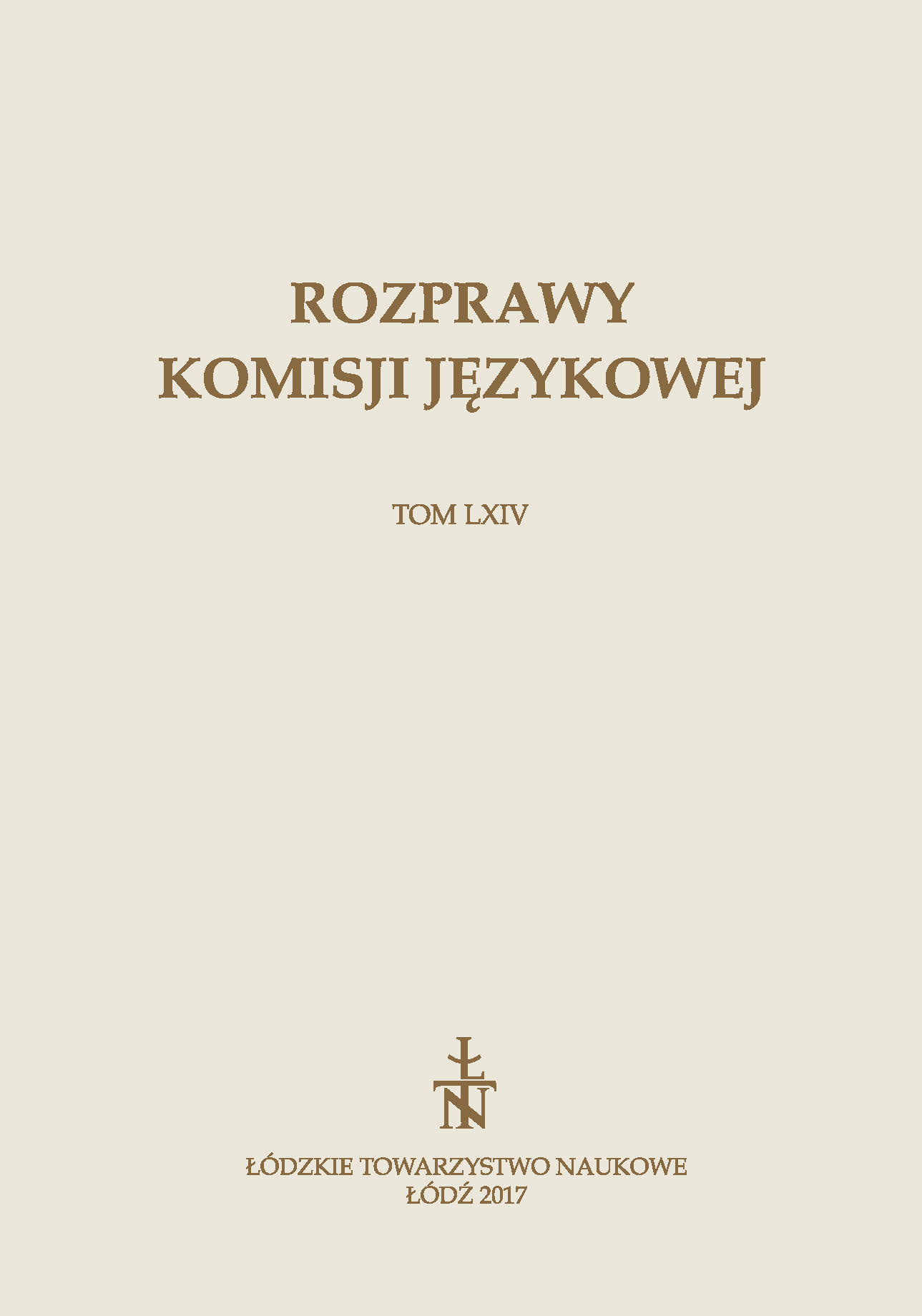
The aim of this article is to introduce a typology of Slavic immigrant dialects spoken in the Russian Federation. The paper deals with two Polish and three Czech varieties located in Siberia,in the case of the Czech ones also at the Black Sea coast of the Northern Caucasus and, partly,with West Ukrainian patois of Siberian Hollanders. The author outlines the current state of their research and analyzes the most eloquent examples of the phonological and grammatical resemblances between them which appeared mainly due to the fact that their original dialectal systems have been similarly influenced by their language surroundings, first of all by Russian. In particular attention is drawn to the problem of penetration of Russian palatalized consonants to phonetic or even phonological systems of those dialects. In morphology, it is shown that the functional sphere of some grammatical categories and forms has changed in the examined dialects not only under influence from Russian, but sometimes also as a result of their independent development in an insular situation.
More...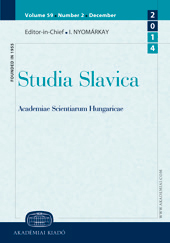
The present paper discusses the Russian lexemes горлопан ‘shouter, bawler’ and крыса ‘rat’, which are problematic from the point of view of etymology. The word горлопан can be explained as a compound, connected by grade haplology to Russian dialectal лопать ‘to shout’ and горло ‘throat’: горлопан = горло-лоп-ан > горлопан (because of expressivity). The Russian word крыса is seen as an expressive doublet to Slavic gryz-. The paper is based on historical and lexicological material, and uses dialectal examples that ensure the reliability of conclusions. The author pays particular attention to the semantic, phonetic, and derivational aspects of the etymology of the word.
More...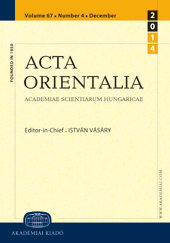
The present article proceeds from that stream of Turcological research according to which the category of “exception”, within the context of (Turkic) vowel harmony, is to be regarded as at least misleading. From a historical point of view, the perfect vowel harmony of contemporary Turkish may be considered a later development which evolved from a primitive, regularly disharmonic system. Through a thorough scrutiny of an 18th-century Armeno-Turkish text, we add new arguments to the debate, by observing that the vowel phonology of Turkic languages seems to have been ruled by at least two colliding processes: a primitive, regular disharmony-triggered morphemic marking [RDMM] versus a transmorphemic rightward vowel harmonising [RVH]. A possible interpretation of some local “disharmonic” phenomena ‒ fossilised remains of a primitive stress assignment? ‒ is proposed here.
More...
Koroshi is the Balochi dialect spoken by the Korosh (Koroš), a group associated with the Qashqa’i tribes of Fārs in southwestern Iran. Entirely isolated from the main body of the Baloch habitat, Koroshi distinguishes itself in grammar and lexicon among Balochi varieties. The phonology of Koroshi demonstrates a solid Balochi pedigree but not without major mutations. Likewise, the nominal case-number system of Koroshi shows significant deviation from most other Balochi dialects. In verb morphosyntax a salient peculiarity is the coexistence of two parallel systems of the imperfective, which appear to be stabilising in an evolutionary process of the Koroshi aspect system. Borrowing from the neighbouring languages is salient in the lexical domain, where Persian, the Fārs dialects, and Qashqa’i Turkish each play a part as the source language. Given all these peculiarities the degree of mutual intelligibility between Koroshi and other Balochi dialects is yet to be established.
More...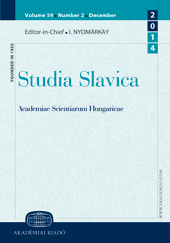
This paper describes the underlying phonological and morphological properties of the Mursko Središće dialect in the context of its relations with other dialects of Međimurje and with dialects of the neighbouring Slovenian territories. This dialect belongs to the Upper subdialect of the Međimurje region. It is characterized by a large number of diphthongs, open and open in positions where we would normally expect a closed Y and closed R. Also visible is the tendency of reflecting the old rear nasal *Y as a, which has already been confirmed in the Croatian–Slovenian language contact in some dialects in Istria and Hrvatsko Zagorje. Morphology is mostly characterized by syncretism of dative, locative, and instrumental endings -aj in the declension of nouns and adjectives. The paper also gives examples for the pseudo-analogonymy between the dialects of Mursko Središće, Prelog, and Beltinci in Prekmurje.
More...
In this paper, the author analyzes lexical items defined by a questionnaire of the Slovene Linguistic Atlas (SLA) and used for outbuildings, farmyard as well as farm chores in the eastern Slovenske gorice sub-dialect, which belongs to the Pannonian dialectal group. In the SLA questionnaire, the above-mentioned lexical items are gathered in no less than seven sections, including the questionnaire’s grammar part. For that reason, the Dialectological Section of the Fran Ramovš Institute of the Slovenian Language ZRC SAZU divided the lexical items into meaningful parts, namely, “outbuildings and farmyard”, “farm chores”, and “other”. The data collected from six local dialects (only two are included into the research points’ network for SLA) show that in the eastern Slovenske gorice sub-dialect, eighty-six lexemes are used for the items analyzed in the article. Two thirds of the lexemes are of Slavonic origin and hardly one third was overtaken from neighbouring Germanic (84%) and Romance (15%) languages in different periods. The dialectal vocabulary of Slovenske gorice sub-dialect analyzed in the paper is almost forgotten by the middle-aged and younger generations, so the research is a tiny but important contribution to the preservation of the Slovene linguistic cultural heritage.
More...
The Croatian language, comprising huge differences considering the number of its speakers, being very important for the reconstruction of a Slavic proto-language (Čakavian accentuation), has become the object of dialectological research early. It has been included in the Slavic Linguistic Atlas (OLA) and in the European Linguistic Atlas (ALE). It was included in the Serbo-Croatian Dialectological Atlas, which was abandoned. In 1996, the Croatian Language Atlas (Hrvatski jezični atlas – HJA) was established by M. Lončarić at the Institute of Croatian Language and Linguistics in Zagreb, with expected 400 research points (in Croatia, Bosnia & Herzegovina and diaspora). The fieldwork was planned to be finished in 6–8 years but the unsufficient funding made the dynamics of the project much slower. Currently, about three-quarters of the expected points have been researched: all the Čakavian ones, while onefifth of the Kajkavian and one-third of the Štokavian ones remain. For the Čakavian points, phonological descriptions have been made, on a model similar to OLA phonological descriptions, and they are currently in print. The paper provides an overview of research in Hungary, especially in its Western part, in particular the results of a recent study of the Štoji dialects.
More...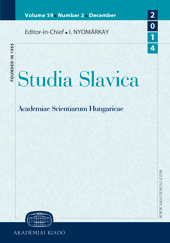
The paper deals with the history of investigation of Ukrainian dialects in Hungary. The authors present the scientific achievements of V. Dóhovics, L. Csopey, L. Dezső, E. Baleczky, I. Udvari, A. Zoltán, and M. Kocsis in the field of Ukrainian dialectology in chronological order. It is stressed that historical dialectology has been in the center of attention of Hungarian Slavists for a long time.
More...
Review of: 1. JANHUNEN, J. (ed.): The Mongolic Languages. Helsinki, 2003. 2. STAROSTIN, S. – DYBO, A. – MUDRAK, O.: Etymological Dictionary of the Altaic Languages. Leiden–Boston, 2003. 3. SVANTESSON, J. O. – TSENDINA, A. – KARLSSON, A. M. – FRANZÉN, V.: The Phonology of Mongolian. Oxford, 2005. 4. RACHEWILTZ, I. DE – RYBATZKI, V.: Introduction to Altaic Philology. Turkic, Mongolian, Manchu. Leiden–Boston, 2010. 5. KANE, D.: The Kitan Language and Script. Leiden–Boston, 2009. by: András Róna-Tas
More...
The author presents the New General Atlas of Hungarian Dialects which is in progress. We get a short review about the necessity of a new general dialect atlas in Hungary. The main reason is the radical decrease of dialect words which was effected by the end of the traditional agricultural way of life. The other reason is that the data of the first general Hungarian Dialect Atlas was collected between 1949 and 1964. The author presents the aspects of the research and the content of the questionnaires; the character und the number of the lexical, morphological, syntactical, and sociolinguistic questions; and the sociolinguistic aspects of the informant selection. The collection was started in 2007 and will be finished in 2011.
More...
Traditional adages are nowadays treated as old-fashioned and met with opposition. As a result witty parodies of proverbs are being created for which a term has been coined by Wolfgang Mieder: anti-proverbs. Collections of such anti-proverbs appear not only in print but also more and more often on the Internet. In creating Dutch anti-proverbs phonic, morphological, syntactical or lexical means are used. To phonic means belong metatheses, substitutions, elisions and sound adjunctions.
More...
In this paper the author analyzes a corpus of Germanisms that have been collected in field research of the dialect of Međimurje. The corpus is analyzed in terms of parts of speech, in terms of extralinguistic reality to which the words belong and in terms of their phonological, morphological and semantic adaptations. A special effort is made to include the variations of replicas at different local points of the dialect of Međimurje in terms of expression and contents. In the chapter on semantic adaptations, a special emphasis is made on the analysis of the seven different kinds of recent secondary semantic adaptations by means of which all the Germanism that have their equivalents in the standard Croatian prolong their presence in the active vocabulary of the speakers of the dialect of Međimurje.
More...
In the article, the Chuvash dialectal word măyăx ‘furs, sack’ and the dialectal variants of the Cheremis word čerke ‘church’ are analyzed. The Chuvash word comes from an Old Novg. form [miḙx] < Old Russian /měх/ of the 14th century, the Cheremis dialectal variants are borrowings of an Old Russian north dialectal form *cerky, where the donor form represents an intermediate phase of change сыку > *cerky > cerkov'.
More...
Jovan Sterija Popović (1806–1856) is considered to be the creator of original Serbian comedy. All his life Sterija remained faithful to tradition and to his Vojvodinian speech—Serbian language coloured with localisms and words of foreign origin. He even publicly opposed Vuk Karadzić’s insisting on east hercegovinian dialect becoming the base of Serbian literature language. In his comedy Rodoljupci that depicts the period of the Hungarian revolution in Vojvodina 1848, people of Serbian nationality use plenty of Hungarian words adopting them into Serbian with often comic changes of their phonetic or morphemic characteristic, and using rules which are in use to this date. Serbian surnames can be found as translated literally into Hungarian, even whole Serbian sentences into that language. Therefore, considering the popularity of J. St. Popović’s work to these days, one can claim that he has without doubt played an important role in establishing the practise of borrowing and adjusting the words from Hungarian into Serbian language.
More...
The object of the study of contact grammar is those changes of linguistic elements that are influenced by the contact language. The clear example which belongs to the field of the Slavic-German-Hungarian contact grammar is the separable, adverbial by origin, prefixes of verbs. In some Slavic languages and dialects, this unusual phenomenon appeared during the lasting contacts with German. As seems, in Hungarian the development of the same phenomenon was also caused by German, and in turn it influenced neighboring Slavic dialects. In the present article, the author have studied the separable verbal prefixes of the Gradiščan dialect of Croatian, have indicated their German and Hungarian equivalents and have compiled the list of the verbs with the prefixes of this sort. The analysis resulted in the conclusion that the given adverbs not only specify the meaning of the verbs but also dominate in the coining of new words and affect syntax. The research into this most interesting problem, initiated by the prominent Hungarian scholar Laszlo Hadrovics on the basis of South Slavic material, requires the more detailed examination of the Slavic linguistic area and its history.
More...
The рарег attempts а comparative analysis of five poems about insomnia written bу eminent Russian poets through the interval of 125 years. Performed on the rhythmic, phonic, syntactic, lexical and stylistic 1evels, the analysis displays the “narrowness of poetic space”: over and above their individual character, аll the five poems аrе based upon the Puškinian poetic principles, i.е. on the functional synthesis of different stylistic layers, the “architectonic” arrangement of phonic devices, and others. At the same time, the peculiar mental state of insomnia bringing to the surface some essential (mostly harassing or anxious) thoughts and feelings of the sleepless subject, the poems reveal deep-rooted elements of the authors’ vision of the world.
More...